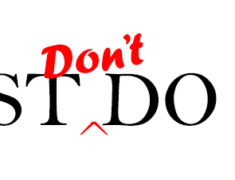Once upon a time, in the distant past of the 1990’s, all web sites were composed of text, lines, tables and maybe a few low quality images. This was the dawn of the Internet, when few people had access to it, and those who did were running on pretty normal 28.8 kbit connections or paying a premium for the luxurious 56.6 kbit dial up lines.
But when bandwidth started getting cheaper and Internet connection speeds raising exponentially thanks to new technologies like ISDN, ADSL and Broadband, webmasters started making their sites more complicated, more beautiful and with more features like dropdown menus and Javascript activated information windows.
Somewhere along the way, someone said that people are attracted to shiny and colorful things, and that designers should start creating such sites and online applications. And they did. 2003-2006 was the “Shiny and Shinier” era of the Internet, when everyone tried to make their sites as beautiful and full of features as possible.
The latest additions were AJAX menus, pop-ups, contact forms and anything else that could be AJAXified and videos. With the addition of these things, server loads started getting too high and bandwidth not enough, so designers thought “We really should get back to practicality”, which they did 🙂
Still, a lot of people think that the better their site looks and the more images and video/audio material they post, the more traffic they will get. That is not true at all. The most important thing was and always will be useful content. And it doesn’t matter in what form – if people really want it, they WILL read it, listen to it, watch it or extract it from HTML and PHP code (OK, not really 🙂
You shouldn’t stuff your site full of Flickr images and Youtube videos, that won’t help anyone. Instead, the site should contain useful information ordered in a readable form (with paragraphs, bullets, numbers, links to relevant sites) AND relevant images and videos, if you can find or create them.
While images may be helpful for SEO, audio and video files themselves are certainly not, so what’s the point of inserting a video of birds chirping on a photography blog (unless your readers really want to watch it)?
A good technique for figuring out just how much text, images and videos you need on your site is the rule that says “a third of all people like to read, a third of them to listen and a third to watch”.
So, you use all of the advantages of today’s Internet, like podcasts and live video streaming, but in an orderly fashion and in the right proportions. If you want to post a video on your site, it would definitely benefit from a short description of what it contains, so users can decide whether to watch it and Search Engines can index it and rank the post for the right keywords.
Remember that no matter what your site is about, the most important thing is the quality of the information it provides, no matter what form it is in. If you’ve got that, Search Engines will send you traffic, people will link to you and talk about your posts on forums and you will be able to find great ways to turn all of that into profit, popularity or whatever else you may need.


